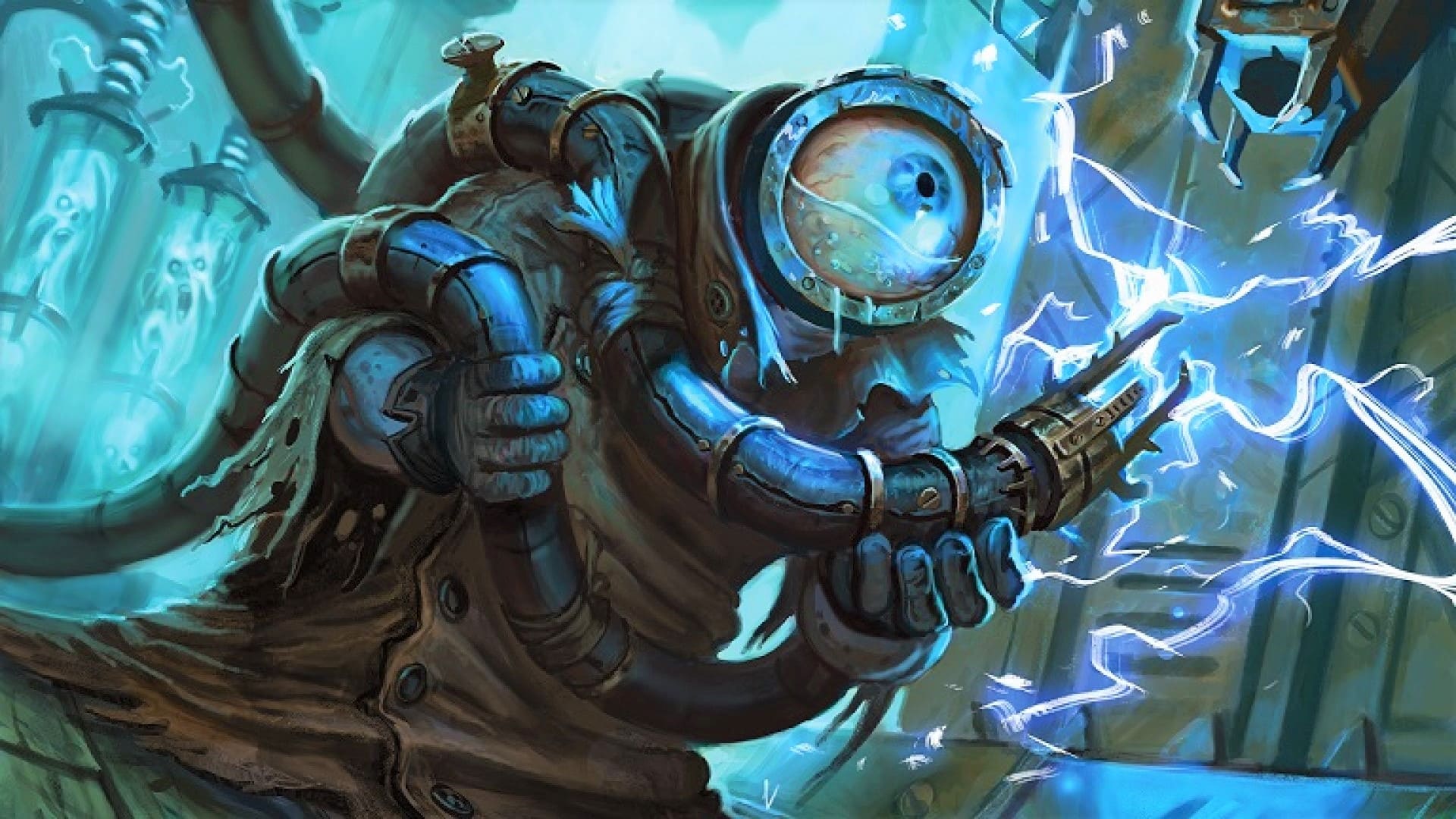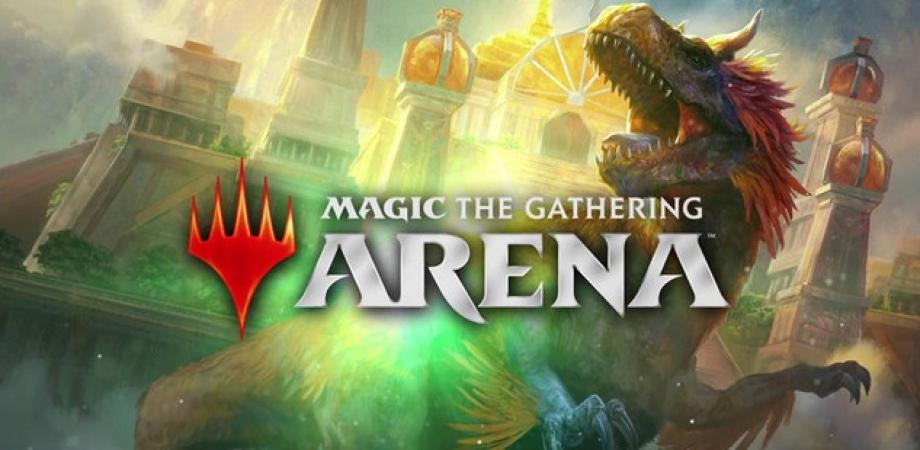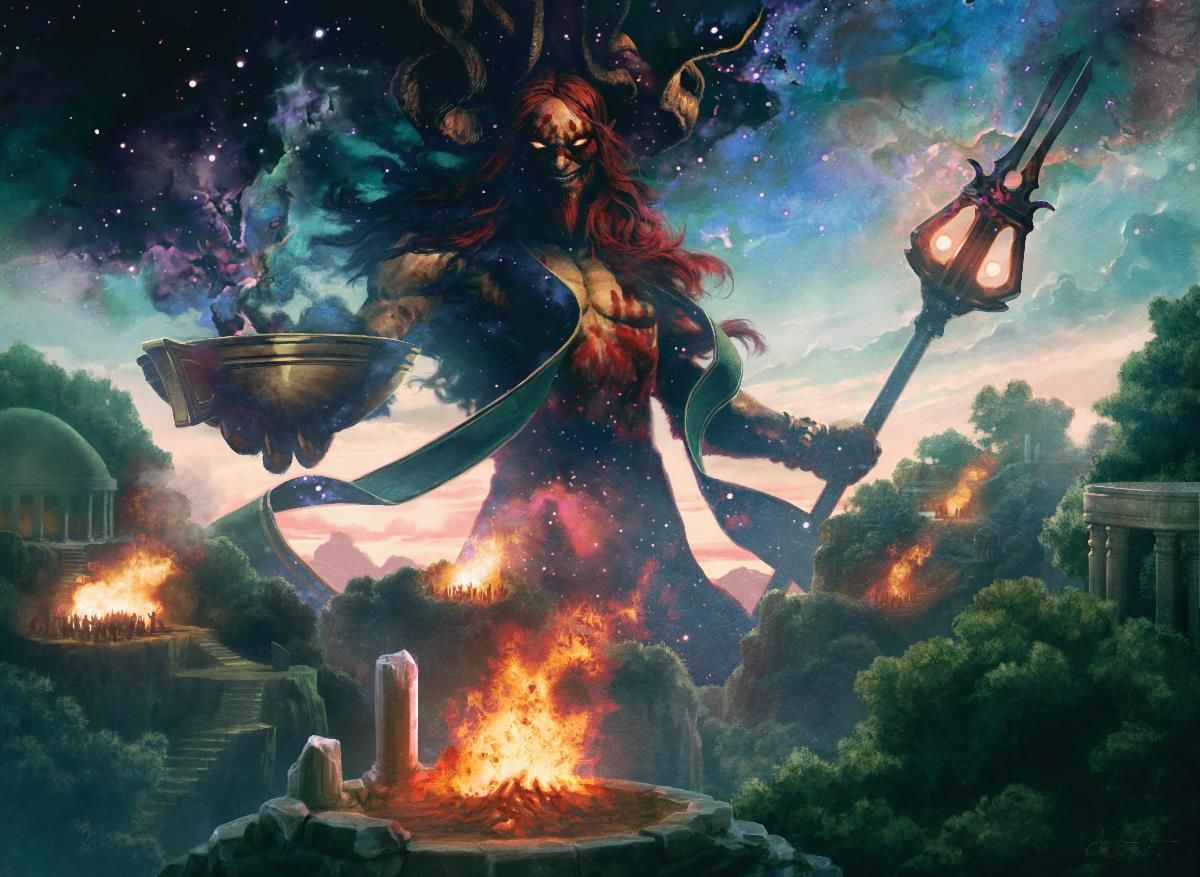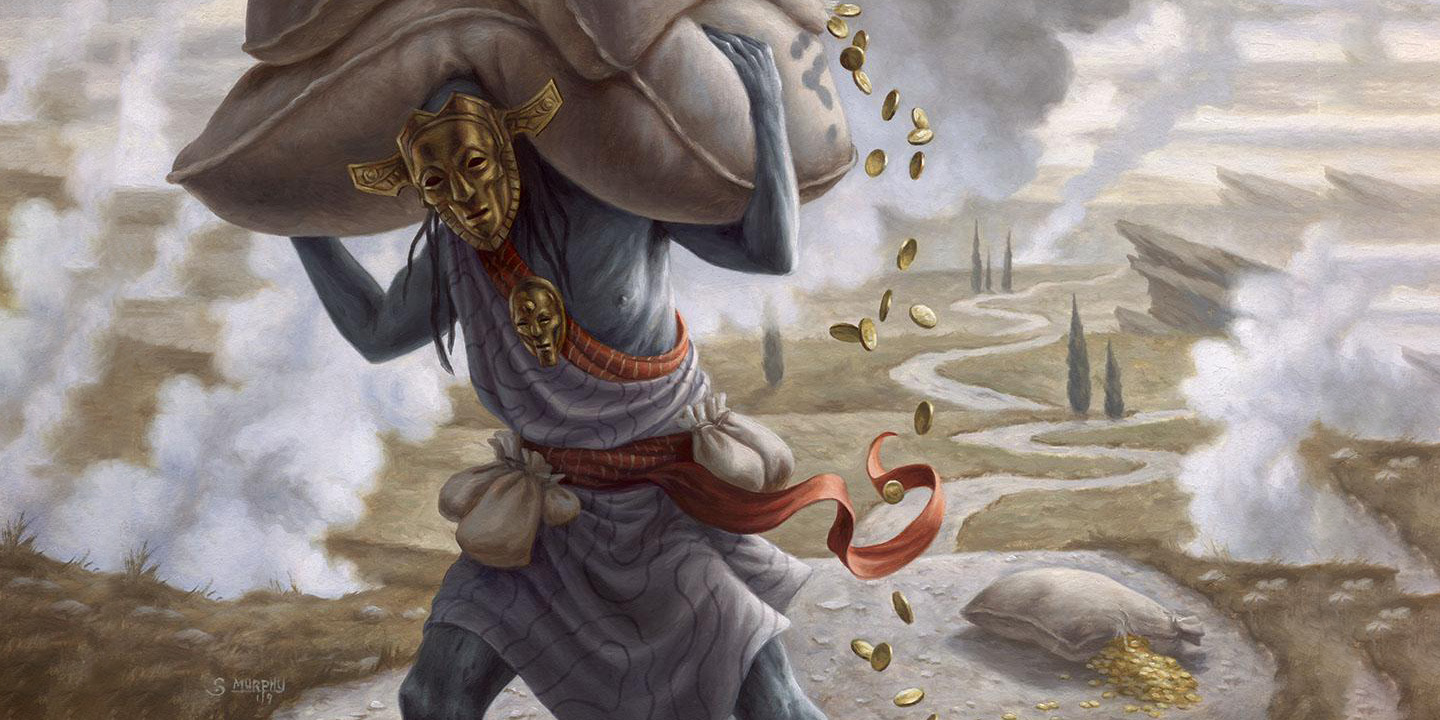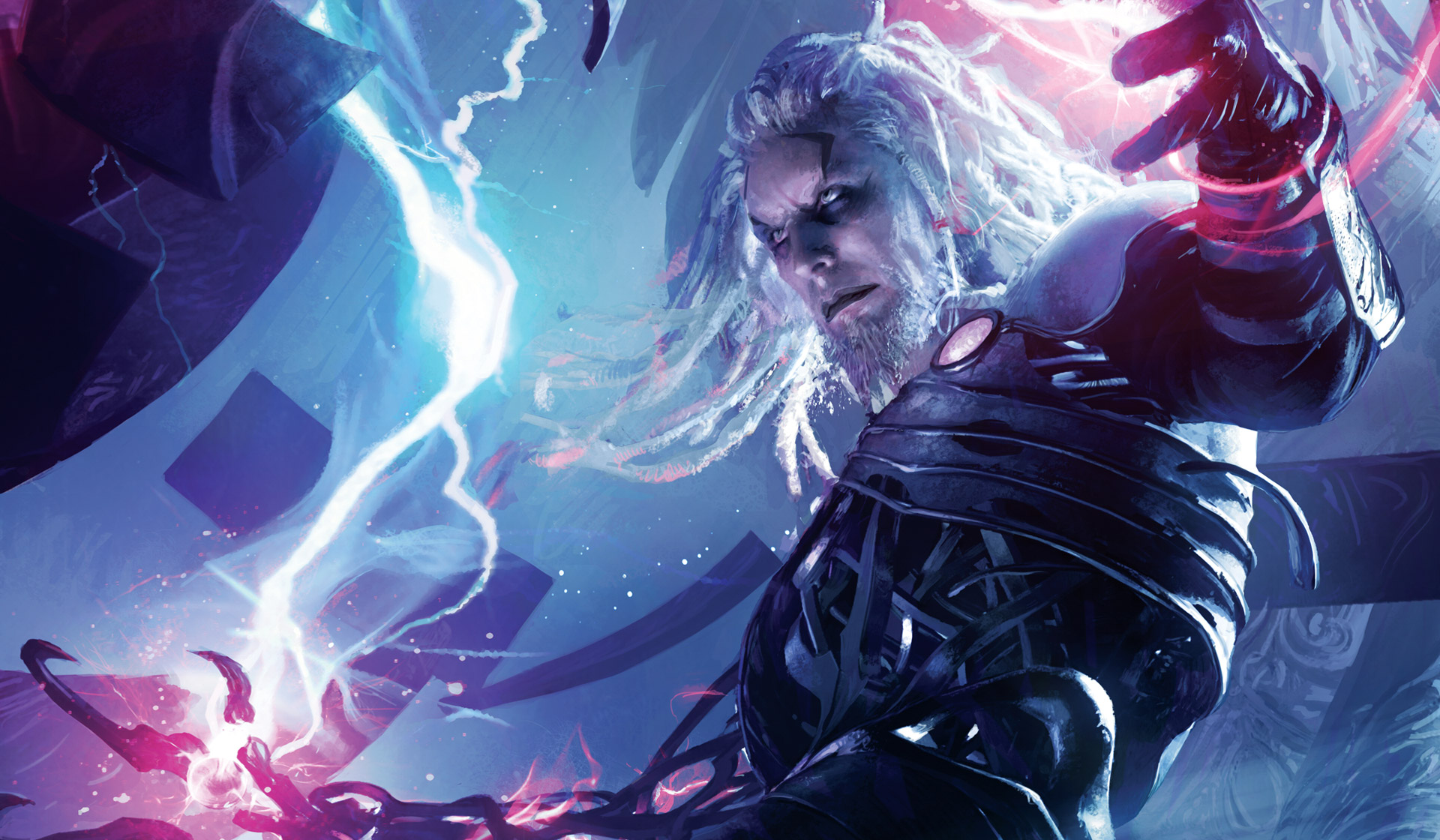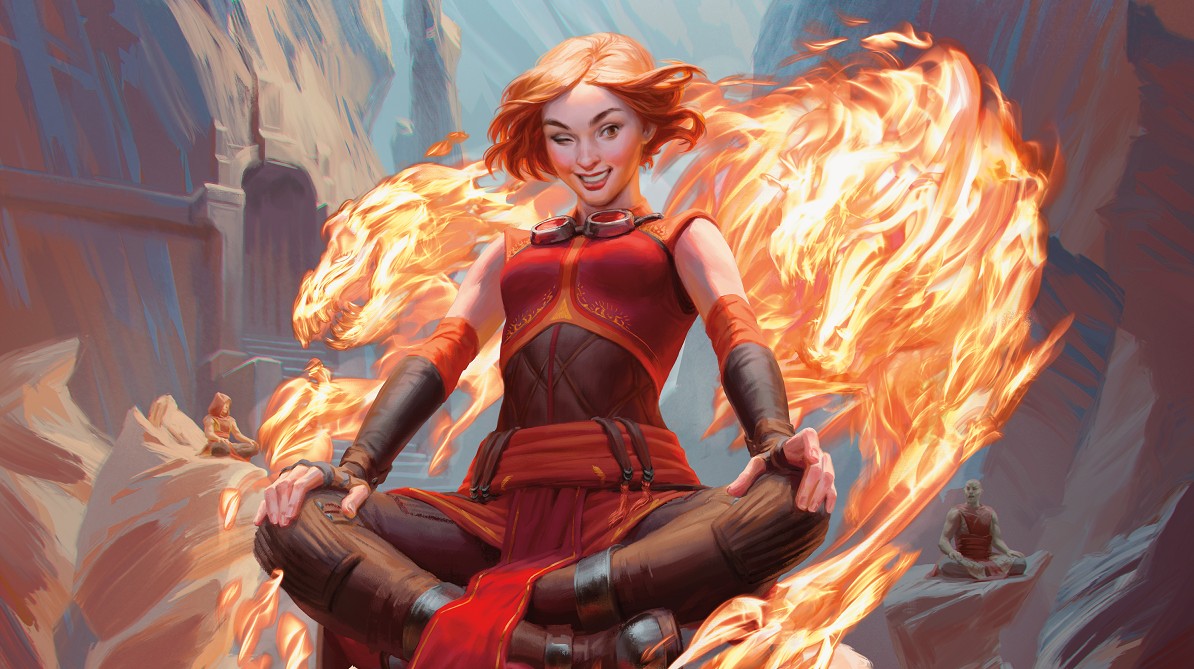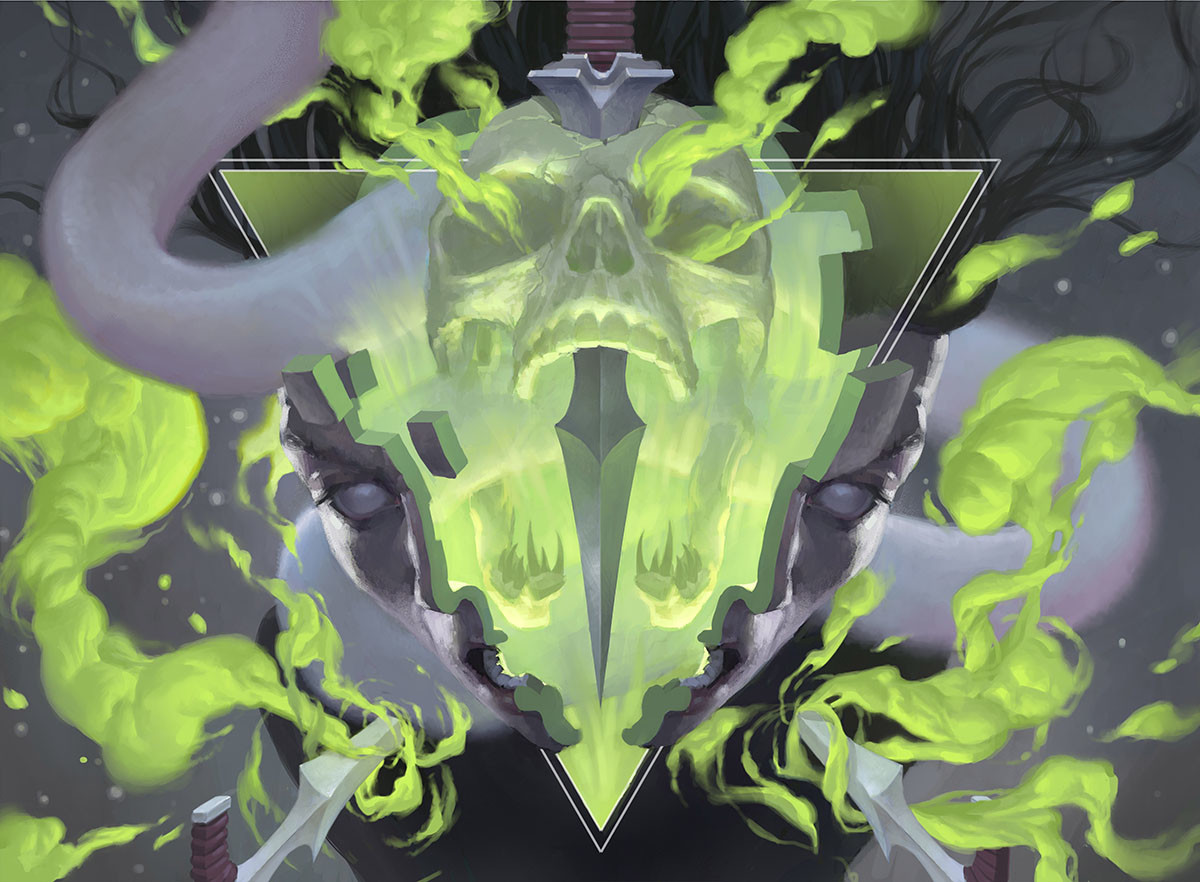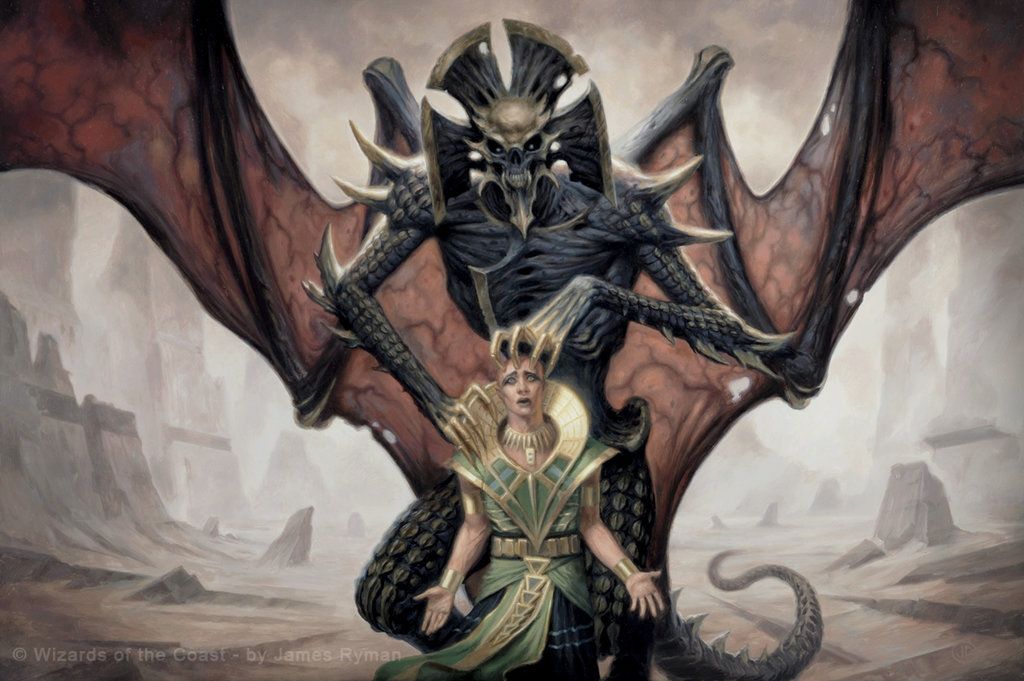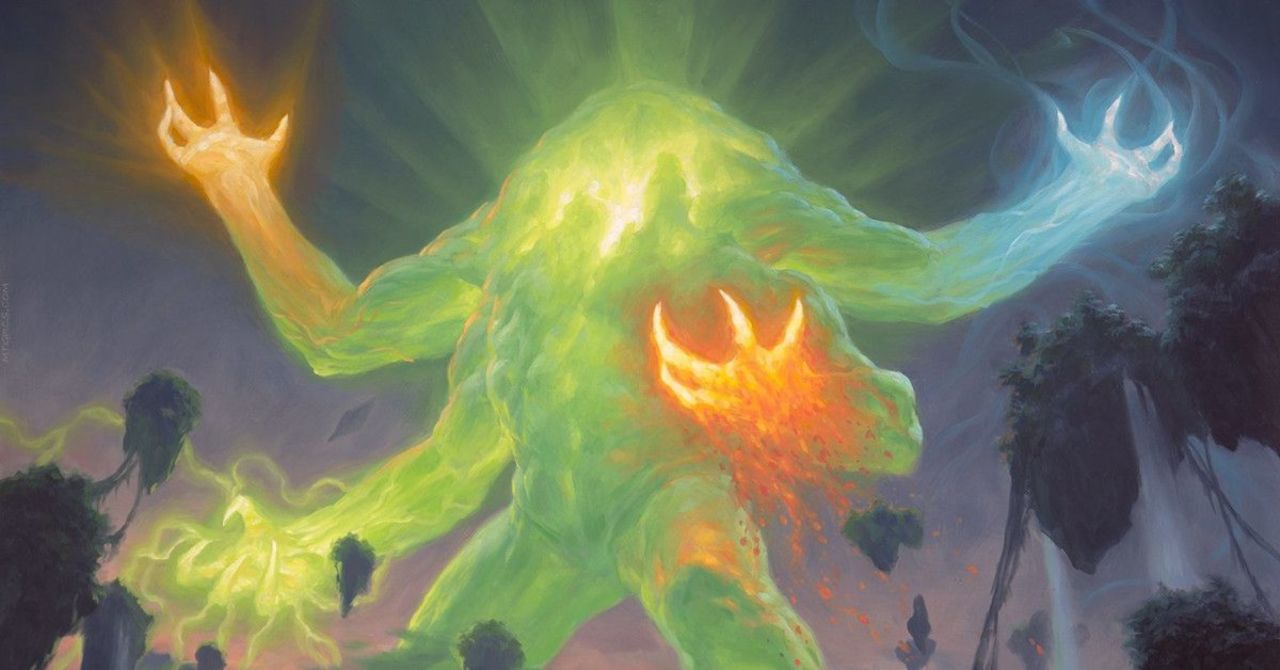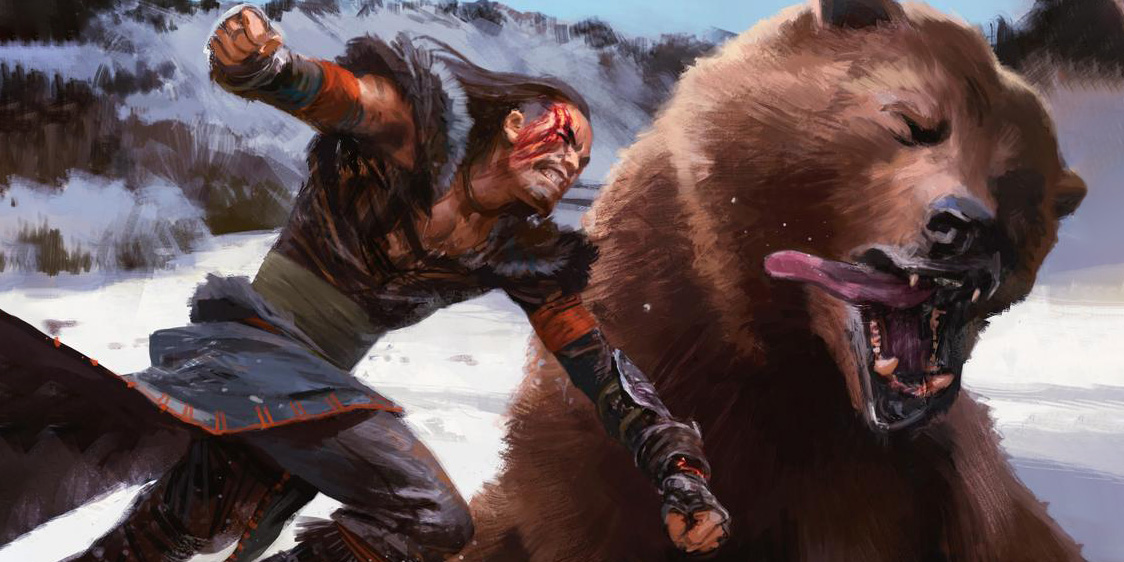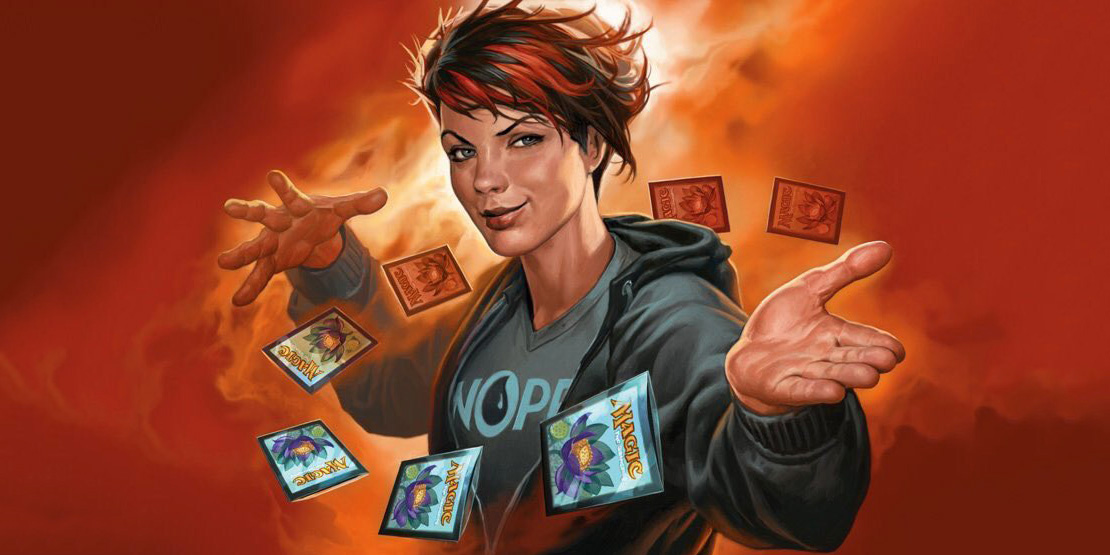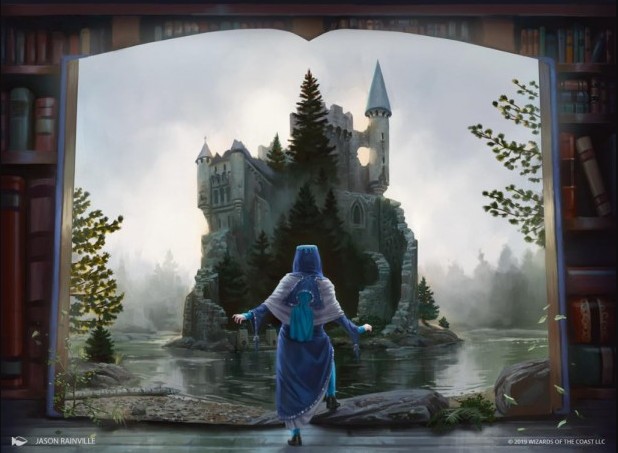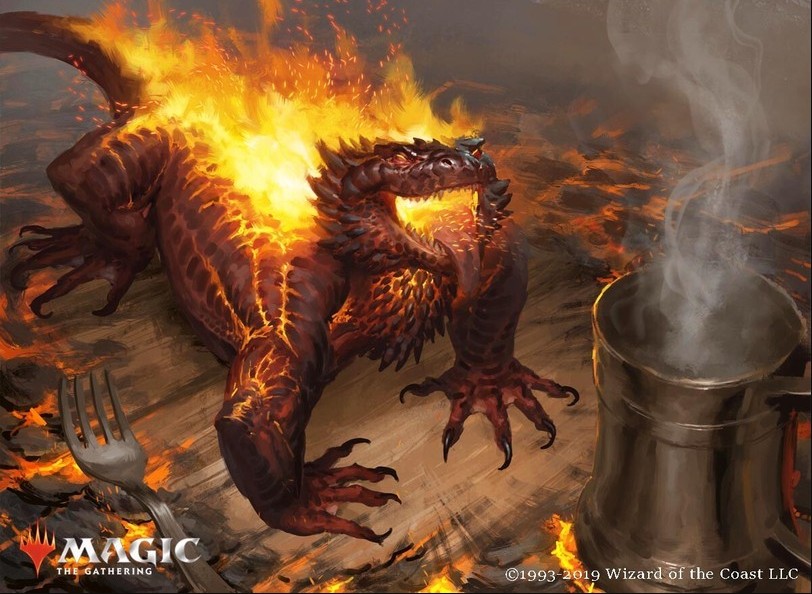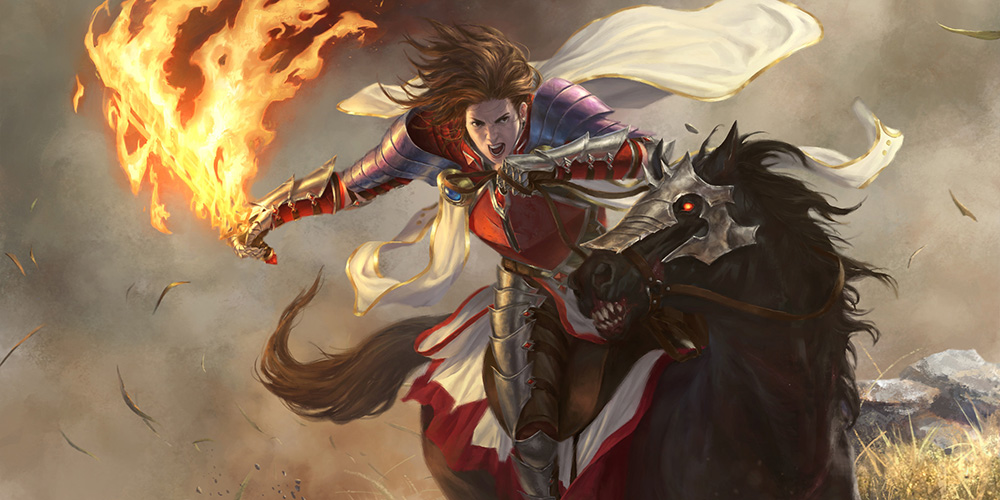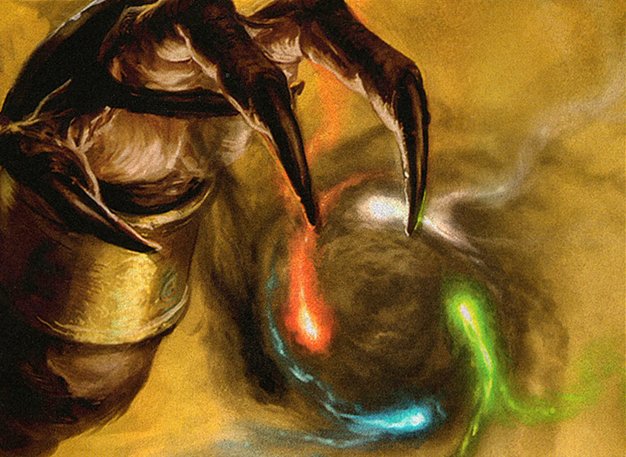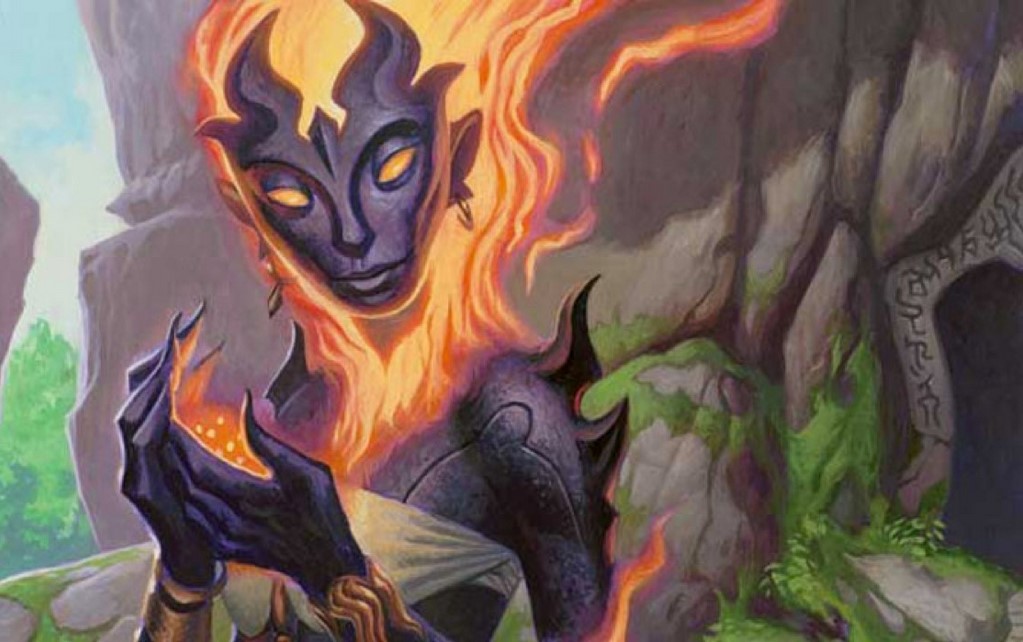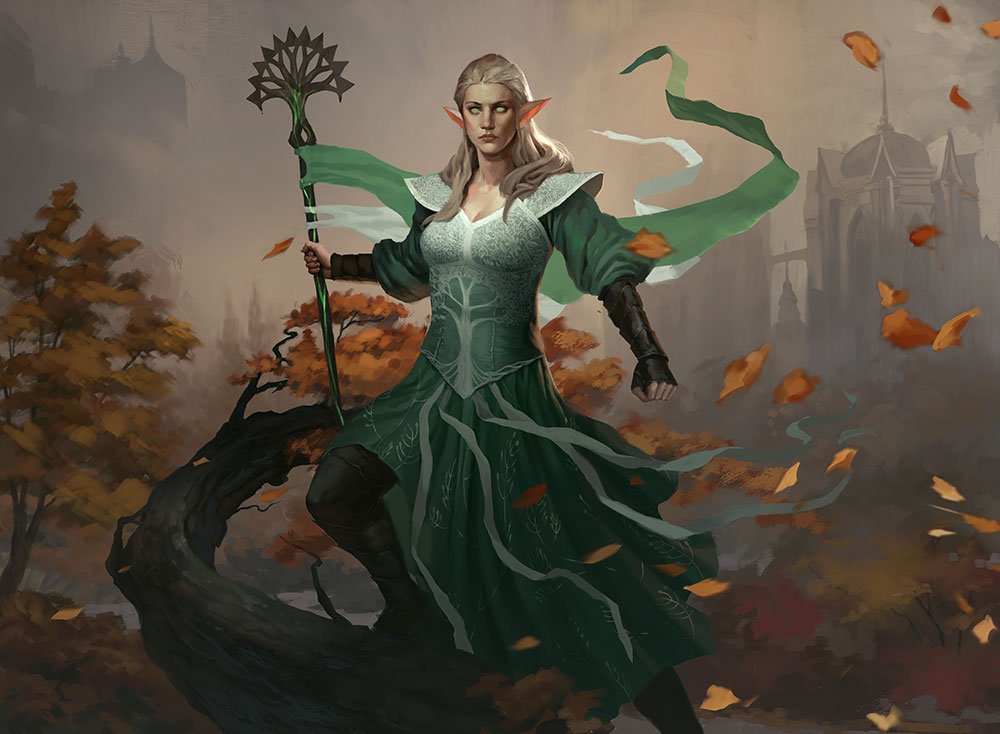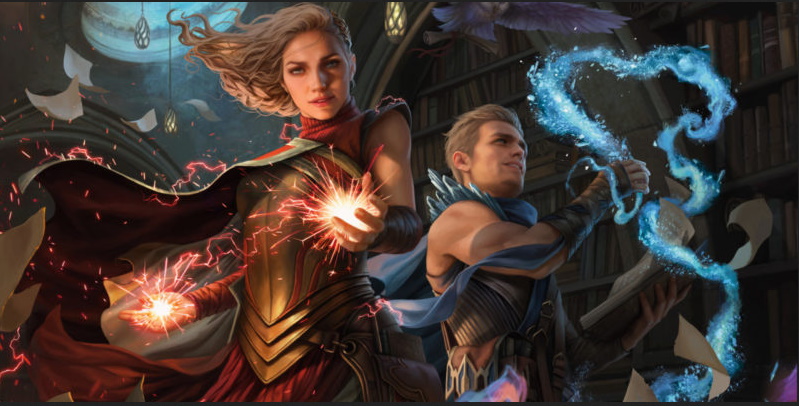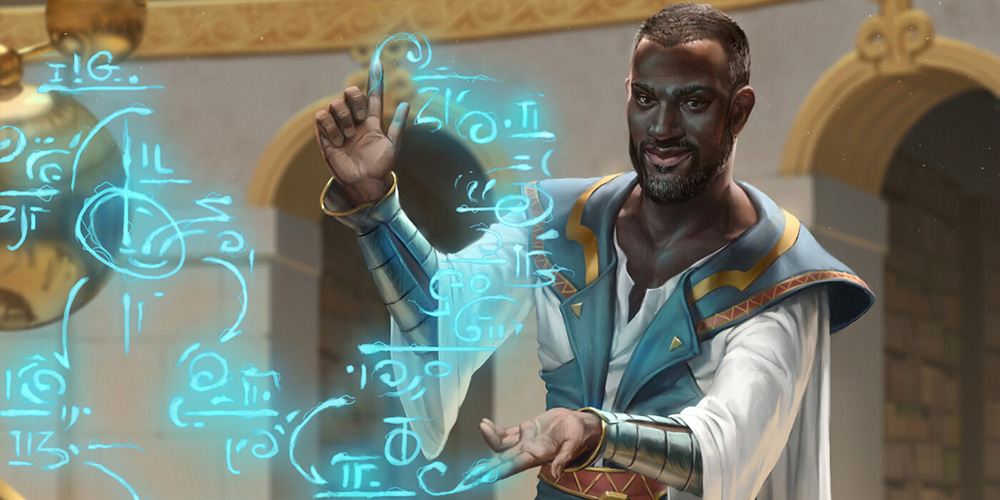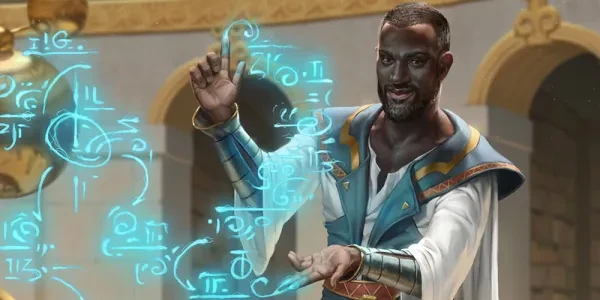
After going through MTG Arena’s new player quests, you will unlock 10 starter decks for each of the possible two-color combinations. These decks give you a feel for how each color pair plays out and can be a starting point to make one of your own. Although these decks were intended to have equal strength, some just performed better than the others. In this article, we’ve ranked the decks according to their win rate on MTGArena.Pro at the time of writing.
10. Spellpower
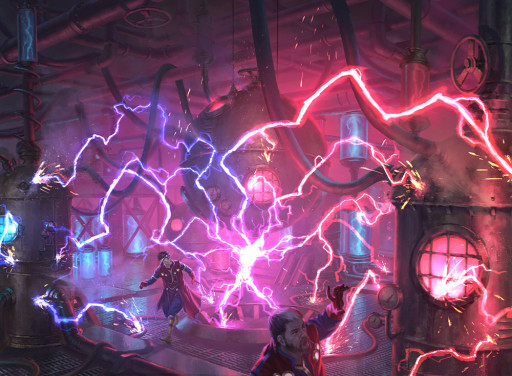
Overload your opponent’s defenses as you summon a huge creature and get back your best spell.
Spellpower leans into the spell-focused nature of the Izzet color (blue/red). Your cards get bonuses or grant more effects as you cast non-creature spells or collect them in your graveyard. Experimental Overload lets you make a big threat and get another chance to cast your best spell.
What's good about this deck:
- Your cards' synergy makes the deck more powerful than the sum of its parts. Double Vision duplicates your spells while Shark Typhoon creates tokens based on their mana cost.
- You can see more of your deck. A big share of your spells can draw cards which means you can draw out of poor starting hands and get to your good cards.
- Your good draws can get out of hand fast. If you play an early Spellgorger Weird and back it up with removal spells, you will beat your opponent in a few turns.
How to play this deck effectively:
- Your best hand consists of Vodalian Arcanist while the rest depends on what you’re up against. Cheap removal is good against aggro while the big payoff cards are for slower decks.
- Target yourself when casting Merfolk Secretkeeper’s Adventure side. Filling your graveyard with spells is good for Spelleater Wolverine and Experimental Overload.
- Play Spellgorger Weird early so it can gain counters from your spells and grow into a huge threat. Cast your non-creature spells pre-combat to inflict the most damage.
- Play your Wavebreak Hippocamp with mana left over to cast a spell on their turn if possible. This lets you at least get some value if they manage to immediately kill it.
- When you play a non-creature spell, don’t make Riddleform into a creature if it's not necessary. Your opponent could be holding instant speed removal and get a chance to kill it.
Cards:
Deck2 Merfolk Secretkeeper
2 Vodalian Arcanist
1 Brazen Borrower
3 Spelleater Wolverine
2 Spellgorger Weird
1 Wavebreak Hippocamp
1 Stormwing Entity
1 Riddleform
1 Double Vision
1 Shark Typhoon
3 Opt
2 Shock
2 Anticipate
3 Scorching Dragonfire
2 Frost Breath
2 Forbidden Friendship
1 Stolen by the Fae
3 Experimental Overload
2 Boon of the Wish-Giver
4 Swiftwater Cliffs
1 Temple of Epiphany
10 Island
10 Mountain
9. To Adventure!

This innkeeper reserves the best deals for his adventurer patrons.
As the name implies, To Adventure! makes full use of the Adventure mechanic from Throne of Eldraine. Your creatures have card advantage built-in since they can be cast as spells first, then later on as a creature. Edgewall Innkeeper adds even more value by giving you a card each time you cast one of these creatures.
What's good about this deck:
- Your Adventure creatures give you a lot of options on how to play your hand. You can cast them as spells at first or as straight-up creatures if you need them right away.
- You can get a lot of value compared to other decks. Each copy of Innkeeper adds more to what you get from your creatures.
- You have Flying creatures or ways to grant flying to your creatures. This lets you continue attacking even if the opponent manages to stall on the ground.
How to play this deck effectively:
- Your best hand consists of several Innkeepers, plus a mix of Adventure creatures and the lands to let you cast them.
- Play Innkeeper, Pathlighter, and Wandermare early to get extra value when you cast your Adventure creatures.
- Know your role in a match and take that into account when using your cards. Consider things like casting Ardenvale Tactician early if you think its Adventure side won’t be useful in a match.
- When you draw Realm-Cloaked Giant against another creature deck, see if you can get them to overextend into a board wipe which they won’t expect.
- Check the board to see how you can make full use out of Shepherd of the Flocks’ Adventure. You can use it to pick up a creature to recast its Adventure side or save one of your creatures from a kill spell.
Cards:
Deck4 Edgewall Innkeeper
3 Faerie Guidemother
1 Giant Killer
3 Garenbrig Squire
3 Shepherd of the Flock
2 Silverflame Squire
2 Ardenvale Tactician
1 Lovestruck Beast
2 Mysterious Pathlighter
4 Wandermare
3 Oakhame Ranger
1 Ironscale Hydra
1 Victory's Envoy
1 Realm-Cloaked Giant
3 Banishing Light
1 Primal Might
4 Blossoming Sands
1 Temple of Plenty
10 Forest
10 Plains
8. Line of Fire

This pirate and his pet monkey get stronger when you sacrifice another creature.
Line of Fire is a midrange deck based on the theme of sacrificing your creatures to gain extra value. To enable this, the deck has cheap creatures with useful death triggers such as Careless Celebrant and Discordant Piper. Also, creatures with Escape like Woe Strider and Kroxa, Titan of Death's Hunger can be recast using the cards that end up in your graveyard.
What's good about this deck:
- While this deck works best when you're aggressive, it can play defense if necessary. You can turn things around right away once you have control of the board.
- You have ways to attack your opponent's life points outside of combat. Your opponent isn’t safe even if they manage to set up blockers.
- Removal is less effective against you compared to other creature decks. You can sacrifice your creatures for value in response to kill spells, then revive them later.
How to play this deck effectively:
- Your best hand consists of sacrifice fodder like Celebrant, a payoff card like Dire Fleet Warmonger, and some number of removal spells.
- When your Kroxa is in the graveyard, always look for ways to reach the number of cards you need to pay for its Escape cost.
- Once you have enough of lands, keep one in hand in case you draw Fire Prophecy which can exchange it for another card.
- Don't forget to sacrifice your creature to Woe Strider's ability whenever they are about to die outside of combat. Scrying into your good cards is almost as good as drawing a random card.
- Look for opportunities to cast Village Rites in response to an opponent's kill spells. With Liliana’s Standard Bearer, cast it after they play a board wipe to draw several cards at once.
Cards:
Deck2 Serrated Scorpion
2 Blood Aspirant
3 Careless Celebrant
3 Discordant Piper
1 Kroxa, Titan of Death's Hunger
1 Piper of the Swarm
3 Slaughter-Priest of Mogis
3 Dire Fleet Warmonger
1 Liliana's Standard Bearer
1 Woe Strider
1 Elite Headhunter
1 Tectonic Giant
1 Goremand
1 Alchemist's Gift
2 Infuriate
2 Village Rites
3 Fire Prophecy
2 Heartless Act
1 Eat to Extinction
2 Forbidden Friendship
4 Bloodfell Caves
1 Temple of Malice
9 Mountain
10 Swamp
7. Massive Menagerie
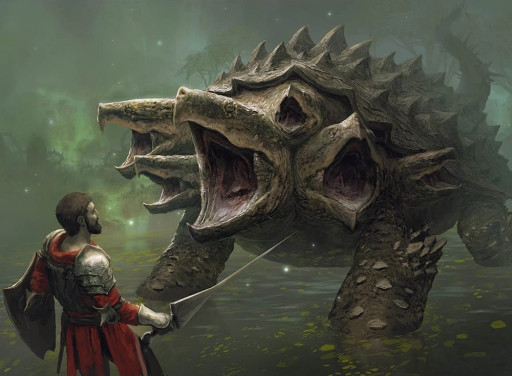
If you cast a big spell, this turtle hydra hybrid rewards you with a card.
Massive Menagerie is all about ramping up to the biggest threats the Simic color (blue/green) has to offer. Your early game spells are either permanents that can tap to add mana or spells that can search for lands. Beanstalk Giant does double duty as both ramp and payoff card once you have enough mana to cast it as a creature.
What's good about this deck:
- Your bruisers are generally bigger than your opponents' so you have an edge in creature combat.
- You have many creatures that hit for a ton of damage and are hard to block. Elder Gargaroth and Thorn Mammoth are big beat sticks with Trample.
- Unlike other decks with a narrow theme, you can boost the power of this deck by just adding any cards you have that cost a lot but are strong on their own.
How to play this deck effectively:
- Your best hand consists of several cheap mana creatures or ramp and a payoff card like Kogla, the Titan Ape.
- As a ramp deck, making all your land drops is critical. If you need to mulligan, lean toward keeping lands and ramp spells instead of payoff cards.
- Attack first with your Almighty Brushwagg before using your mana for other things. Threatening to use activate its ability is usually enough to discourage your opponent from blocking.
- Play Thunderous Snapper early so you don't miss out on drawing cards when you start casting your expensive spells.
- Be wary of using a pump or fight spell when your opponent leaves mana open. In the early turns, it's often obvious that they have removal if they pass their turn without playing a card.
Cards:
Deck2 Almighty Brushwagg
3 Maraleaf Pixie
2 Llanowar Visionary
3 Thunderous Snapper
1 Elder Gargaroth
2 Keeper of Fables
1 Kogla, the Titan Ape
1 Serpent of Yawning Depths
3 Beanstalk Giant
1 Pursued Whale
1 Thorn Mammoth
2 Witching Well
3 Wolfwillow Haven
3 Ram Through
3 Fully Grown
1 Sublime Epiphany
2 Cultivate
4 Thornwood Falls
1 Temple of Mystery
11 Forest
10 Island
6. Back for More
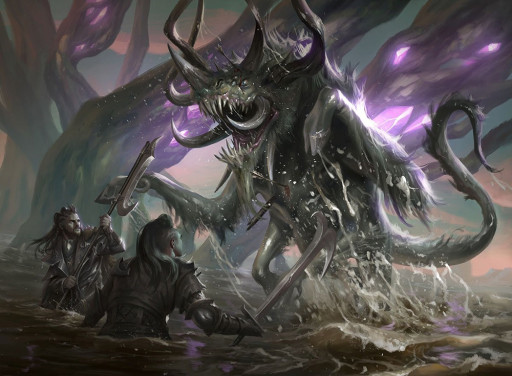
Nobody ever expects an instant speed reanimation spell!
Back for More uses cards that bring back creatures from your graveyard to your hand or reanimate them into the battlefield. You have creatures like Mire Triton and Skull Prophet that fill your graveyard with potential targets. On top of that, you have cards like Polukranos, Unchained and Demonic Embrace that can be cast straight from the graveyard.
What's good about this deck:
- As a midrange deck, you’re able to play offense or defense, whichever is more effective against the current deck you’re facing.
- Your threats can keep coming back. Unless your opponent exiles them, you can keep bringing back threats like Treeshaker Chimera until they run out of answers.
- This deck rarely runs out of gas. You have a lot of ways to get cards back from the graveyard like the deck’s namesake card Back for More.
How to play this deck effectively:
- Your best hand consists of a couple of enablers like Mire Triton, removal spells, and a way to get cards from your graveyard like Order of Midnight.
- Nightmare Shepherd’s ability exiles the creature it makes a copy of, so you may not want to use it if you have other ways to bring your creature back.
- Polukranos, Unchained’s ability works in such a way that you can have it fight and kill small Deathtouch creatures without dying.
- Unless you’re ambushing an attacker, wait until the end of your opponent’s turn to cast Back for More. You want to give them the least chance to kill your creature before you can attack with it.
- Keep in mind when using Boneyard Lurker’s Mutate that it can only target non-human creatures. This means Skull Prophet and Acolyte of Affliction are invalid targets.
Cards:
Deck3 Mire Triton
2 Order of Midnight
3 Skull Prophet
3 Deathbloom Thallid
3 Llanowar Visionary
1 Murderous Rider
2 Acolyte of Affliction
1 Arasta of the Endless Web
2 Boneyard Lurker
1 Nightmare Shepherd
1 Polukranos, Unchained
2 Twinblade Assassins
1 Treeshaker Chimera
3 Dead Weight
1 Demonic Embrace
2 Sudden Spinnerets
2 Drag to the Underworld
2 Back for More
4 Jungle Hollow
1 Temple of Malady
10 Forest
10 Swamp
5. Starry-Eyed

Beware of faeries that hoard auras instead of treasure.
Starry-Eyed uses enchantments with Enters the Battlefield abilities and spells that support them. Cards like Arcanist's Owl and Thirst for Meaning let you dig for cards relevant to your matchup. Kiora Bests the Sea God is a haymaker with three powerful triggers that will end games if not answered.
What's good about this deck:
- Your cards' synergy makes the deck more powerful than the sum of its parts. For example, Shambling Suit becomes stronger the more artifacts and enchantments you have.
- Playing All That Glitters on one of your creatures can give it enough power to knock out your opponent in one attack if they're not careful.
- You have Kiora Bests the Sea God, which is a very powerful enchantment that some decks won’t have an answer to.
How to play this deck effectively:
- Your best hand consists of The Birth of Meletis, a couple of enchantment-based removal spells, and a payoff card like Archon of Sun’s Grace.
- If an aggro deck attacks you with a one toughness creature, don’t hesitate to block with Eidolon of Philosophy. In that matchup, you won't have the time to get to seven mana and use its ability.
- Set things up so you have a target to bring back when you play Elspeth Conquers Death (ECD). You can try to force a creature trade if you’re guaranteed to resolve ECD’s third trigger.
- Consider keeping one of your cheap enchantments in your hand so you have something to discard when you draw Thirst for Meaning.
- Don’t forget that Luminous Broodmoth’s ability only works for creatures that don’t have Flying. This means that Arcanists’s Owl and Archon of Sun’s Grace are not covered by its ability.
Cards:
Deck2 Eidolon of Philosophy
3 Stinging Lionfish
2 Naiad of Hidden Coves
2 Shambling Suit
3 Arcanist's Owl
1 Archon of Sun's Grace
1 Luminous Broodmoth
2 Brine Giant
1 Midnight Clock
2 All That Glitters
3 The Birth of Meletis
3 Banishing Light
2 Capture Sphere
1 Elspeth Conquers Death
1 Kiora Bests the Sea God
2 Karametra's Blessing
3 Thirst for Meaning
1 Banish into Fable
4 Tranquil Cove
1 Temple of Enlightenment
9 Island
11 Plains
4. Life Skills
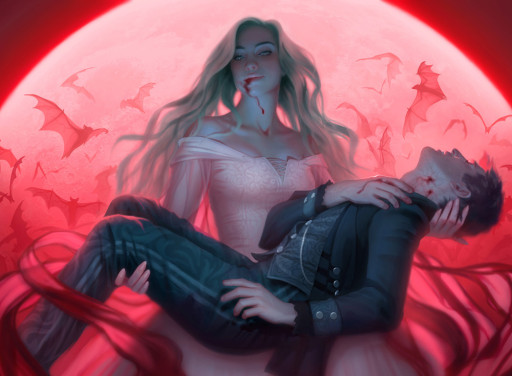
Let’s go out for a drink, she said. It’ll be fun, she said.
Life Skills is an Ozrhov deck (white/black) that uses cards that give extra value when you gain life. Griffin Aerie, Silversmote Ghoul, and Indulging Patrician attack your opponent from different angles. The rest of the deck contains spells that enable these payoff cards like Revitalize and Tavern Swindler.
What's good about this deck:
- The synergy between its cards makes the deck more powerful than the individual spells. Revitalize is only card-neutral life gain in most decks, but here it triggers all your payoff cards.
- It has a great matchup against aggressive decks. Because your strategy involves life gain, it's harder for opposing decks to win by damage.
- You have ways to attack your opponent's life points outside of combat. With Indulging Patrician, your opponent isn’t safe even if they manage to stop your attacks.
How to play this deck effectively:
- Your best hand consists of Griffin Aerie, Silversmote Ghoul, and life gain enablers. The rest can be made up of kill spells and lands that produce the right colors.
- Play your payoff cards like Griffin Aerie early. This lets you make the most amount of tokens over the course of the game.
- Whenever you’ll gain at least three life, look for ways to get value out of Silversmote Ghoul. Trade it with your opponent’s creature or sacrifice it to draw a card before the end of your turn.
- When facing decks with big creatures, consider choosing Deathtouch instead of Lifelink on Boot Nipper.
- Attack first with your Resolute Rider before using your mana for other things. The threat of becoming indestructible may be enough to discourage your opponent from blocking.
Cards:
Deck2 Anointed Chorister
1 Speaker of the Heavens
2 Boot Nipper
3 Tavern Swindler
3 Indulging Patrician
2 Silversmote Ghoul
1 Vito, Thorn of the Dusk Rose
3 Resolute Rider
1 Baneslayer Angel
1 Clackbridge Troll
1 Shadowspear
3 Griffin Aerie
2 Faith's Fetters
1 Erebos's Intervention
2 Light of Hope
3 Revitalize
2 Unexpected Fangs
2 Bake into a Pie
4 Scoured Barrens
1 Temple of Silence
10 Plains
10 Swamp
3. Company of Knights
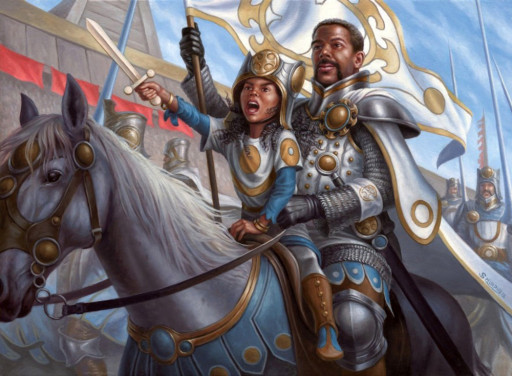
This veteran inspires not only his troops but also the next generation.
Company of Knights, as the name implies, is a tribal deck focused on knights. It uses cards like Worthy Knight and Acclaimed Contender that reward you for sticking with the knight creature type. You have access to several burn, pump, and removal spells that let you get blockers out of the way.
What's good about this deck:
- Your cards are decent, even without the synergy. Your creatures have a good mana cost to stat ratio, so you’re not compromising power for the extra abilities.
- You can finish most games in only a few turns. That's great if you want a quick way to finish daily quests or progress up the ranking ladder.
- Embercleave by itself will win games out of nowhere by boosting your damage and turning combat into a one-sided beatdown.
How to play this deck effectively:
- Your best hand consists of Venerable Knight, Inspiring Veteran, other knights that go up the mana curve, and equipment or removal.
- Mulligan away hands that don’t have early game creatures. This deck works best when you have the initiative, and it also doesn’t play defense very well.
- Play Worthy Knight early so you get to create the most amount of tokens as you cast your other knights.
- You don't always have to equip Embercleave on your biggest creature. Giving it to Rimrock Knight lets you attack through small blockers.
- Attack first with Weaselback Redcap before using your mana for other things. The threat of pumping it is usually enough to stop your opponent from blocking.
Cards:
Deck3 Venerable Knight
2 Weaselback Redcap
3 Inspiring Veteran
2 Rimrock Knight
1 Worthy Knight
2 Youthful Knight
1 Acclaimed Contender
2 Ardenvale Tactician
2 Basri's Acolyte
1 Basri's Lieutenant
3 Fireborn Knight
1 Haktos the Unscarred
2 Burning-Yard Trainer
1 Grasping Giant
2 Short Sword
1 Embercleave
2 Pacifism
1 Dub
2 Infuriate
2 Scorching Dragonfire
4 Wind-Scarred Crag
1 Temple of Triumph
10 Mountain
9 Plains
2. Mutation Station
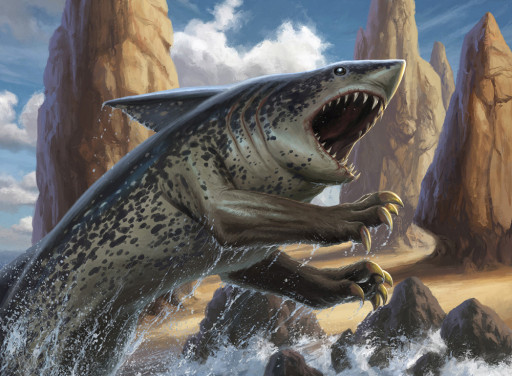
Mutate one of your creatures into this shark to unsummon a threat.
Mutation Station builds around the Mutate ability introduced from the set of Ikoria. The strategy is to play an early Mutation target like Mysterious Egg and mutate onto it several times which compounds your advantage. Besides the Mutate creatures, you also have creatures that can win games on their own like Lochmere Serpent or Massacre Wurm.
What's good about this deck:
- Mutate is a cool mechanic that lets you build a custom creature depending on what's good for the situation.
- You have draws that can get out of hand fast. If you manage to stack mutations early, you will bury your opponent in card advantage.
- Your creatures generate a lot of value as the game goes go longer. If you mutate a creature that has mutated before, you’ll trigger both the old and new mutation.
How to play this deck effectively:
- Your best hand consists of Pollywog Symbiote, several Mutate creatures, and a few spells to support them.
- Don’t keep mutating on one creature if you suspect that your opponent has a kill spell. Sometimes having a separate body is more important than getting the Mutate trigger.
- Take advantage of your Mutate creatures with Flash to trigger their abilities when your opponent least expects it.
- You only have a few kill spells so lean towards killing your opponent’s creatures through combat and save those for game-winning threats.
- When you use Lochmere Serpent’s revival ability, exile the most threatening cards from your opponent’s graveyard first.
Cards:
Deck3 Mysterious Egg
2 Boot Nipper
3 Pollywog Symbiote
1 Sea-Dasher Octopus
2 Tome Raider
1 Atris, Oracle of Half-Truths
1 Dirge Bat
3 Insatiable Hemophage
2 Dreamtail Heron
2 Pouncing Shoreshark
1 Underworld Sentinel
2 Chittering Harvester
1 Lochmere Serpent
1 Massacre Wurm
1 Archipelagore
2 Rookie Mistake
2 Stern Dismissal
2 Eliminate
2 Unexpected Fangs
4 Dismal Backwater
1 Temple of Deceit
10 Island
11 Swamp
1. Stomp, Stomp
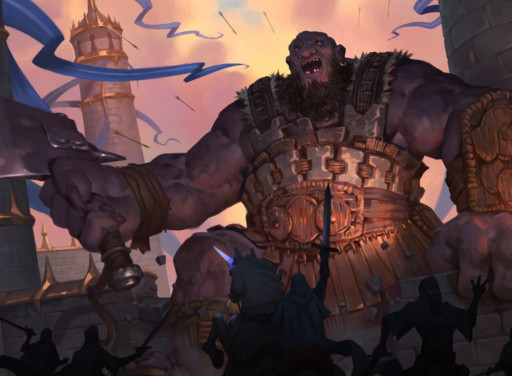
Walls and knights can’t stop this giant from smashing through.
Stomp, Stomp is hands down the best of the dual-colored starter decks you can get. The classic strategy of early mana creatures ramping into powerful threats up your mana curve is as good today as it was in the early days of Magic. Radha, Heart of Keld and Terror of the Peaks are two notable haymakers that will end games fast if not dealt with.
What's good about this deck:
- Your creatures generally outsize creatures from other decks so you have an advantage when it comes to creature combat.
- You have a solid late-game plan when the game goes long. Return of the Wildspeaker can pump your team for a massive attack while Leafkin Avenger can do direct damage to your opponent.
- It's not very demanding to upgrade. Whether it's a mythic rare or a common, you can add any creature from your collection as long as it has an efficient stats to mana cost ratio.
How to play this deck effectively:
- Your best hand consists of Ilysian Caryatid, several creatures going up the mana curve, and some removal spells.
- Be careful when attacking with Innkeeper if the opposing deck has cards that can ambush it. For example, Rogue decks have Flash creatures while blue decks might play Shark Typhoon.
- Attack first with your Almighty Brushwagg before using your mana for other things. Your opponent might choose not to block even when you don't pump it.
- Save Return of the Wildspeaker for a lethal attack or when you have a decent-sized creature so you can draw at least three to four cards.
- Be wary of using a pump or fight spell when your opponent leaves mana open. An obvious sign that they have removal is if they pass their early turn without playing anything.
Cards:
Deck3 Almighty Brushwagg
3 Ilysian Caryatid
2 Nessian Hornbeetle
2 Rimrock Knight
1 Bonecrusher Giant
2 Dreamstalker Manticore
2 Hornbash Mentor
1 Radha, Heart of Keld
3 Warden of the Chained
3 Leafkin Avenger
3 Rampart Smasher
1 Terror of the Peaks
1 The First Iroan Games
2 Ram Through
2 Scorching Dragonfire
3 Unleash Fury
1 Return of the Wildspeaker
1 Volcanic Salvo
4 Rugged Highlands
1 Temple of Abandon
10 Forest
9 Mountain
You may also be interested in:
- The 10 Best MTG: Arena Decks
- MTG Arena Guide, Tips and Tricks
- Best Ways to Get Wildcards in MTG Arena
- [Top 7] MTG Arena Best Artifact Decks That Wreck Hard!
- [TOP 5] MTG Arena Best Control Decks
- [Top 10] MTG Arena Best Historic Decks That Wreck Hard!
- MTG Arena Best Packs To Buy – A Guide for Beginners and Intermediate Players
- MTG Arena: Best Ways to Get Cards
- Top 15 Best MTG Arena Mythic Rares
- MTG Arena Ranking System Explained
- The Best Singleton Decks in MTG Arena
- [Top 5] Best MTG Arena Aggro Decks
- [Top 5] MTG Arena Best Angel Decks
- [Top 10] MTG Arena Best White Decks
- [Top 10] MTG Arena Best Black Decks

